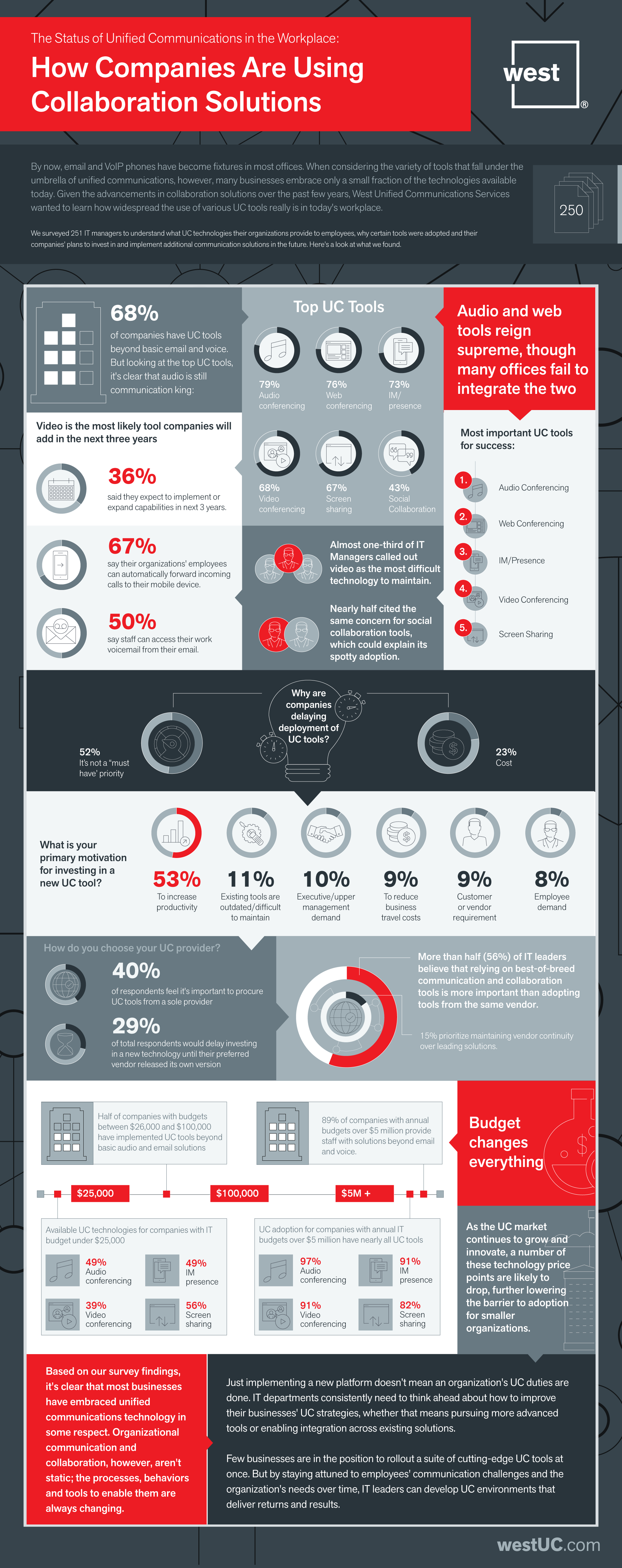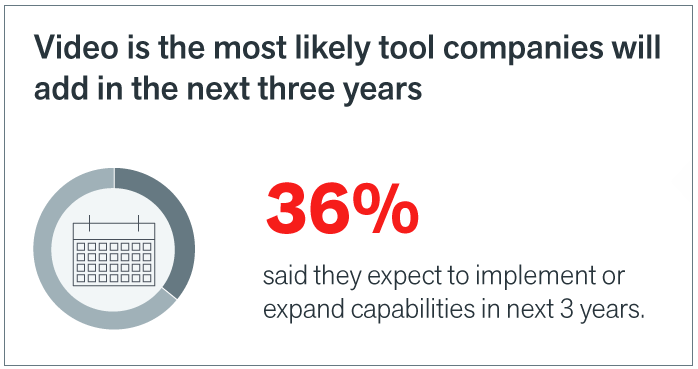The idea of unified communications (UC) combining multiple methods of communication into a single solution absolutely benefits organizations and employees, but what about IT professionals? We’re finding that UC implementations means IT teams are dealing with continuous change management and businesses no longer operate from 9am-5pm. So, a solid UC performance is expected 24/7.
That could mean a lot of work rests on the shoulders of IT teams, but is it?
What’s really happening from an already overloaded IT professional’s perspective? Is UC truly a productivity mechanism for everyone? Or is UC perceived as a bunch of baloney work that’s piling on top of IT teams day-to-day?
Are you an IT professional working UC? Go ahead, take our two-minute survey and tell us what’s really happing for you when it comes to deploying and managing unified communication for your large business.
Definition of Unified Communication
The premise of UC is to combine real-time, enterprise, communication services such as chat, presence information, voice, mobility, audio, web conferencing, video conferencing, fixed-mobile convergence (FMC), desktop sharing, data sharing (e.g., web connected electronic interactive whiteboards), call control and speech recognition with non-real-time communication services such as unified messaging (e.g, integrated voicemail, e-mail, SMS and fax). UC requires a single or set of products in order to provide a consistent unified user-interface and user-experience across multiple devices and media-types.
Being an end-user myself, this all spectacular from my perspective. I can’t imaging my work day without it.
Birth of Unified Communications
For fun, I dug into the history of unified communication. Apparently, the idea of unified communication came in the 1980s. It emerged from the worlds of voice messaging, IVR, and e-mail. This technology was, “recognized as an access mechanism to corporate information for mobile employees.” VMX, an early voicemail leader, then began to offer an “email reader” on their voicemail system by 1985.

Unified Communications Today
Today, the unified communications is heavily integrated into the enterprise workplace, and it continues to evolve and grow. Check out this great infographic from West Unified Communication Services where they surveyed more than 250 IT managers to understand what UC technologies their organizations provide to employees, why certain tools have been adopted, and their company’s plans to invest in the future.

I was surprised to find West Unified Communications Services survey reported audio are the top communication tool compared to newer, web-based technologies. Here’s the survey result breakdown:
- Audio conferencing (79%)
- Web conferencing (76%)
- IM/presence (73%)
- Video conferencing (68%)
- Screen sharing (67%)
- Social collaboration (43%)
I suppose it takes time to shift a large enterprise organization’s communication and productivity tools and tactics. Again, this is a responsibility that commonly falls to IT teams (one more thing for them to manage).
Of course, working on Vyopta, I have to = add that video is the most likely tool (36%) companies will be investing in within the next three years. Check it out:

Horray for video! (Really, no sarcasm.) However, with great video, comes great responsibility for IT teams (on top of all of their other responsibilities). IT teams will need to work even harder to ensure quality performance, a solid user experience, end-user adoption, and positive operational costs. Otherwise, these types of unified communication methods will not be successful. If users dont’ use it, the return on investment will be a negative one.
Future of Unified Communications
The responsibilities of IT team seem as though they will continue to grow in years to come. Tom Nolle, President of CIMI Corporation also had this to say about the future of UC;
“By 2020, there will be no such thing as CRM, MRP or even UC in the sense of dedicated software and hardware solutions.”
Again, more change management and shifts in responsibilities to come.
So, to sum things up here, the idea of UC has been around since the 1980’s and has continued to evolve and grow at an amazing clip. New innovations, features, and updates are being released continuously. Plus, company acquisitions are forcing the need to update or adopt new technology options. Although some IT professionals might be excited by the challenges, the success of this technology within an organization ultimately lies with them. The selection, deployment and management of a company’s UC environment rests on their shoulders.
So, are they loving or hating it?
Benefits vs. Boloney of Unified Communications
We know the benefits of unified communication are endless for the end-user. If you do a quick Google search, you’ll find documentation showing organizations that have embraced UC experience improved efficiency, a reduction in operational costs, increased revenue, and provide better customer service.
What really happening for IT teams who have to manage UC?
In my research, I’ve seen both positive and negative for IT. The goal of UC, from an IT perspective, is to simplify all applications into a common environment which should lead to simpler management overall. This could be true, but what most articles do not discuss is that the use of third-party applications means a reduction of control for IT department’s to monitor network usage for bandwidth management and data security.
So which is it? Is unified communication nothing but a benefit for companies, or is someone (IT) getting the short end of the stick? It could be that IT teams are already exhausted from trying to re-direct the use of communication resources, adjusting business process, reworking budget allocations, etc. and the predictions, that the future of what UC could bring is overwhelming them. So, while we end-users are jumping for joy, IT teams are behind the curtain trying to keep up.
If you’re an IT professional working UC, take our two-minute survey and tell us what’s really happing from your perspective. Inquiring minds want to know!







